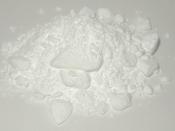Caffeine in Brain
Thousand words to memorize for the Critical reading class, two essays to write for the English composition and English literature class, and 20 pages to read for both classes are due tomorrow, and you haven't started a bit. After the sun starts to go down and you start to realize, "Oh crap, tomorrow's coming up," you begin to panic. Blank and hapless, you don't know where to begin, and even if you are barely settled, you're still not so sure you can make it all happen. One thing that comes to your mind now-"I seriously need some coffee."
Holding a cup of freshly brewed coffee, you feel a bit safer and secure now. A gulp of coffee starts to tighten you up, ready to do it all wide-awake through the night. This hyper energy comes from caffeine in your cup of delightful, delicious, and desirable coffee.
Caffeine keeps you wide-awake and hyper through three steps: blocking the adenosine receptor, injecting adrenaline into your system, and manipulating dopamine production.
Nonetheless, in order to understand how caffeine keeps us awake, we must look at how we sleep without it beforehand. Falling asleep occurs when adenosine, nucleoside known for promoting sleep and suppressing arousal, binds to adenosine receptors. The binding of adenosine causes drowsiness by slowing down nerve cell activity while also causing blood vessels to dilate, letting more oxygen in during sleep.
Now, the common effects of caffeine in our brains are the speeded up nerve cell activities and prolonged arousal. This opposite effect on our brains from that of adenosine is because the two chemicals both belong to the same chemical group--making caffeine more feasible to confuse adenosine receptors--while exhibiting the opposite chemical effects. Due to caffeine's similar chemical structure, adenosine receptors bind to caffeine instead of adenosine,


